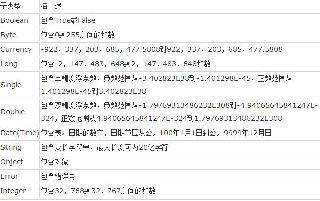Java Socket實現Redis客戶端的詳細說明
Redis是最常見的緩存服務中間件,在java開發中,一般使用 jedis 來實現。
如果不想依賴第三方組件,自己實現一個簡單的redis客戶端工具,該如何實現呢?本文就是介紹這樣一種方法。
Redis的協議非常簡單,而且輸入數據和輸出數據都遵循統一的協議,具體規則參考這里:
http://redisdoc.com/topic/protocol.html
Redis的命令協議:$參數數量n
$參數1的值的字節數組長度
$參數1的值的字符串表示
$參數2的值的字節數組長度
$參數2的值的字符串表示
...
$參數n的值的字節數組長度
$參數n的值的字符串表示
Redis的返回協議:1、狀態回復(status reply)的第一個字節是 '+',單行字符串;2、錯誤回復(error reply)的第一個字節是 '-';3、整數回復(integer reply)的第一個字節是 ':';4、批量回復(bulk reply)的第一個字節是 '$';5、多條批量回復(multi bulk reply)的第一個字節是 '*';6、所有的命令都是以 rn 結尾。
Java代碼說明針對上述規則,我們用兩個類來實現:
1、SimpleRedisClient類,主要用于發送請求,并讀取響應結果(字符串);
整體比較簡單,稍微復雜點的地方就是讀取流數據,遇到兩種情況就該結束循環,一是返回長度為-1,二是返回字符串以 rn 結尾。
如果處理不當,可能會導致 read 阻塞,Socket卡住。
2、SimpleRedisData類,用于解析響應結果,把redis統一協議的字符串,解析為具體的對象。
這部分代碼完全是按照協議規則來實現的,通過一個游標 pos 來向前移動,在移動過程中識別不同格式的數據。
最復雜的是 list 類型的數據,以 * 開頭,后面跟著一個整數,表示列表中所有元素的數量,然后就是每一個列表元素的值,循環解析即可。
package demo;import java.io.Closeable;import java.io.IOException;import java.net.Socket;import java.util.List;public class SimpleRedisClient implements Closeable { private String host; private int port; private String auth; private Socket socket = null; public SimpleRedisClient(String host, int port, String auth) {this.host = host;this.port = port;this.auth = auth;try { socket = new Socket(this.host, this.port); socket.setSoTimeout(8 * 1000);//8秒} catch (Exception ex) { socket = null; ex.printStackTrace();} } public boolean connect() throws IOException {if (socket == null || auth == null || auth.length() <= 0) { return false;}String response = execute('AUTH', auth);if (response == null || response.length() <= 0) { return false;}String res = new SimpleRedisData(response).getString();return 'OK'.compareTo(res) == 0; } @Override public void close() {try { if (socket != null) {socket.shutdownOutput();socket.close(); } //System.out.println('closed');} catch (Exception ex) { ex.printStackTrace();} } public String getString(String key) {if (socket == null || key == null || key.isEmpty()) { return null;}try { String response = execute('GET', key); return new SimpleRedisData(response).getString();} catch (Exception ex) { ex.printStackTrace(); return null;} } public String setString(String key, String value) {if (socket == null || key == null || key.isEmpty()) { return null;}try { String response = execute('SET', key, value); return new SimpleRedisData(response).getString();} catch (Exception ex) { ex.printStackTrace(); return null;} } public String deleteKey(String key) throws IOException {if (socket == null || key == null || key.isEmpty()) { return null;}String response = execute('DEL', key);return new SimpleRedisData(response).getString(); } public List<String> getKeys(String pattern) throws IOException {if (socket == null || pattern == null || pattern.isEmpty()) { return null;}String response = execute('KEYS', pattern);return new SimpleRedisData(response).getStringList(); } public String execute(String... args) throws IOException {if (socket == null || args == null || args.length <= 0) { return null;}//System.out.println(StringUtil.join(args, ' '));StringBuilder request = new StringBuilder();request.append('*' + args.length).append('rn');//參數的數量for (int i = 0; i < args.length; i++) { request.append('$' + args[i].getBytes('utf8').length).append('rn');//參數的長度 request.append(args[i]).append('rn');//參數的內容}socket.getOutputStream().write(request.toString().getBytes());socket.getOutputStream().flush();StringBuilder reply = new StringBuilder();int bufSize = 1024;while (true) { byte[] buf = new byte[bufSize]; int len = socket.getInputStream().read(buf); if (len < 0) {break; } String str = new String(buf, 0, len); reply.append(str); if (str.endsWith('rn')) {break; }}String response = reply.toString();//System.out.println('response: ' + response);return response; }}
package demo;import java.util.ArrayList;import java.util.List;public class SimpleRedisData { public SimpleRedisData(String rawData) {this.rawData = rawData;//System.out.println(rawData); } private int pos; private String rawData; public String getString() {if (rawData == null || rawData.length() <= 0) { return null;}int i = rawData.indexOf('rn', pos);if (i <= 0) { return null;}char c = rawData.charAt(pos);if (c == ’+’) { int from = pos + 1; int to = i; String v = rawData.substring(from, to); pos = to + 2; return v;} else if (c == ’-’) { int from = pos + 1; int to = i; String v = rawData.substring(from, to); pos = to + 2; return v;} else if (c == ’:’) { int from = pos + 1; int to = i; String v = rawData.substring(from, to); pos = to + 2; return v;} else if (c == ’$’) { int from = pos + 1; int to = i; int bulkSize = Integer.parseInt(rawData.substring(from, to)); pos = to + 2; from = pos; to = pos + bulkSize; try {//$符號后面的數值是指內容的字節長度,而不是字符數量,所以要轉換為二進制字節數組,再取指定長度的數據byte[] buf = rawData.substring(from).getBytes('utf-8');String v = new String(buf, 0, bulkSize);pos = to + 2;return v; } catch (Exception ex) {ex.printStackTrace();return null; }} else { return null;} } public List<String> getStringList() {if (rawData == null || rawData.length() <= 0) { return null;}int i = rawData.indexOf('rn', pos);if (i <= 0) { return null;}char c = rawData.charAt(pos);if (c == ’*’) { List<String> values = new ArrayList<>(); int from = pos + 1; int to = i; int multSize = Integer.parseInt(rawData.substring(from, to)); pos = to + 2; for (int index = 0; index < multSize; index++) {values.add(getString()); } return values;} else { return null;} }}
package demo;import org.junit.jupiter.api.Test;import java.util.List;public class RedisTest { @Test public void test() {SimpleRedisClient client = null;try { client = new SimpleRedisClient('127.0.0.1', 6379, '123456'); System.out.println('connected: ' + client.connect()); List<String> keyList = client.getKeys('api_*'); for (int i = 0; i < keyList.size(); i++) {System.out.println((i + 1) + 't' + keyList.get(i)); } System.out.println('keys: ' + keyList != null ? keyList.size() : 'null'); System.out.println(client.getString('api_getCustomerName'));} catch (Exception ex) { ex.printStackTrace();} finally { if (client != null) {client.close(); }} }}
優點:
1、不依賴任何第三方組件,可以順利編譯通過;
2、代碼極其簡單。
不足之處:
1、未考慮并發訪問;
2、未提供更多的數據類型,以及讀寫方法,大家可以在此基礎上包裝一下。
以上就是如何用Java Socket實現一個簡單的Redis客戶端的詳細內容,更多關于Java Socket Redis客戶端的資料請關注好吧啦網其它相關文章!
相關文章:

 網公網安備
網公網安備